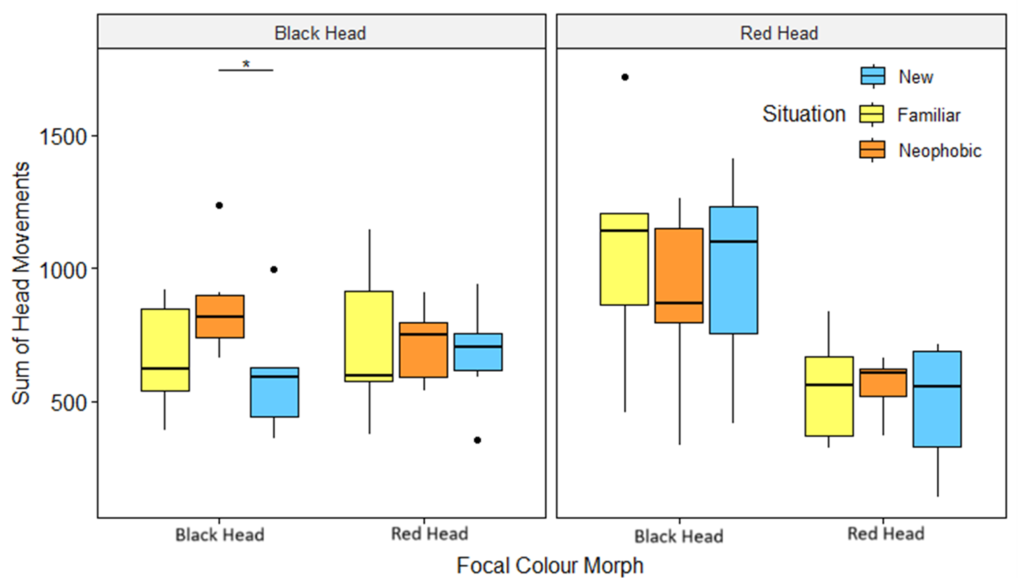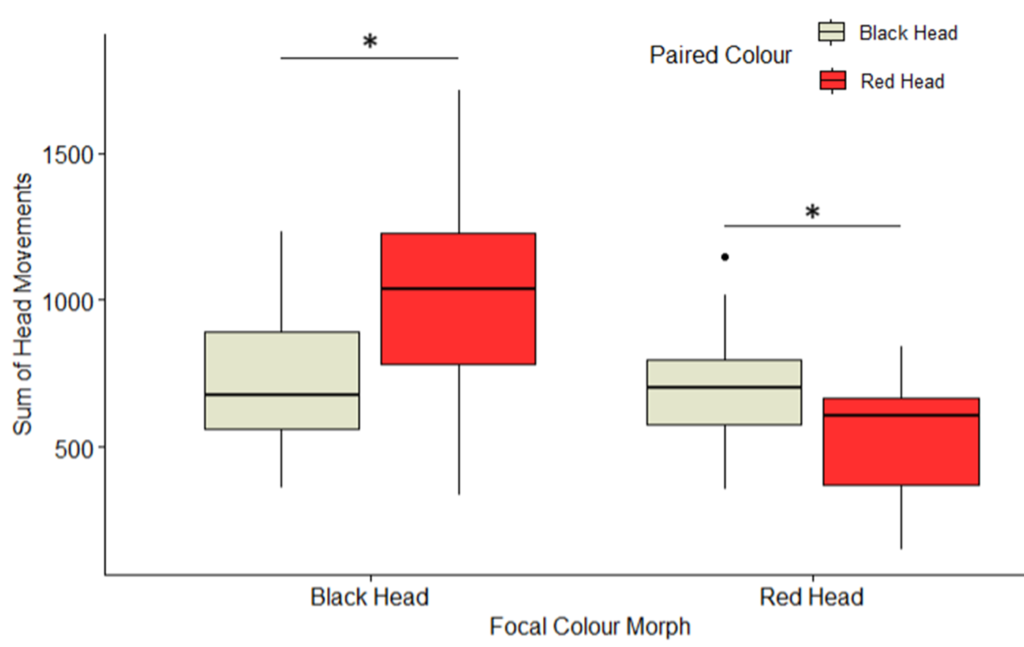A generalised linear mixed model revealed that the type of situation was a significant effect on temperature (i.e. stress). Overall, temperature was observed to decrease in the following order:
New → Familiar → Neophobic,
with a significant decrease in mean temperature between the ‘new’ situation and the ‘neophobic’ situation.
Regarding head movement (i.e. vigilance) a three-way ANOVA (analysis of variance) showed that there was a significant three way interaction between focal colour morph and paired colour morph depending on the situation type. Mixed colour morphs pairs performed the most head movements in the ‘new’ and ‘familiar’ situation. Black-headed pairs had significant increase in the mean sum of head movements from the ‘new’ to the ‘neophobic’ situation. Red-headed pairs had no significant differences in there head movements across the three situations.

A two-way repeated ANOVA revealed that there was also a significant interaction between focal colour morph and paired colour morph. Same colour pairs were shown to perform less head movements than mixed colour pairs.

Pearson correlations analysis between head movements and temperature showed that there was no significant interaction. Similarly, a simple correlation analysis between head movements and temperature also showed that there was no relationship between the two variables across the three situations. There was also no significant difference observed between head colours and group composition regarding the time it to took to approach, be within reach and fed from the feeding apparatus.